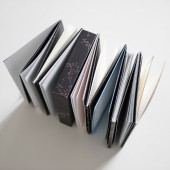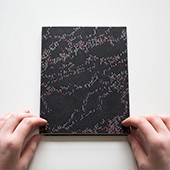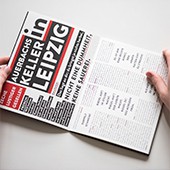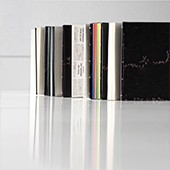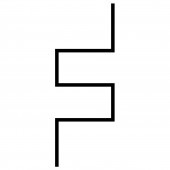Reading. Goethes Faust. Modular Book by Tatjana Medvedev |
Home > Winners > #86075 |
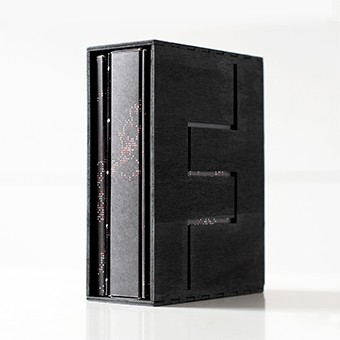 |
|
||||
| DESIGN DETAILS | |||||
| DESIGN NAME: Reading. Goethes Faust. PRIMARY FUNCTION: Modular Book INSPIRATION: We are living in a time of information overload. The consequence hereby is, that the technology around us is permanently changing, by giving us faster and more efficient access to information. So is our reading behavior – it changes along with it. There are voices arising which see in this scenario a basis for a possible destruction of our language and our thinking. This projects attempt was to take a closer look on this theory by asking: could this change also be an evolution of our thinking. UNIQUE PROPERTIES / PROJECT DESCRIPTION: This project is a typographical redesign of Goethes Faust amid the reading development. By visualizing various reading methods in one book without changing the wording or adding images, this project tries to facilitate access to a more demanding way of reading. Knowing that we nowadays mainly retrieve information in a quick way, in the form of emails or WhatsApp messages, the question arises if our information reception is still the same as in the past or if it's even improved or worsened. OPERATION / FLOW / INTERACTION: Each booklet stands for an own reading method, there are 10 in total wich can be meshed into a Leporello. Beginning with the classical Layout which refers to the focussed reading, there are 9 further visual reading translations. Each of them is selected in line with the content of the tragedy. The book object has two functions of interaction: 1. holistic reading: by retaining the booklets in the Leporello system. Here the reader can experience the tragic plot reversal in a physical way, by rotating the book object after the first 5 parts. 2. an individual reading of each part, by taking each booklet out of the leporello system. PROJECT DURATION AND LOCATION: The project was a bachelor thesis with a duration of three months by starting in December 2014 in Munich and being finished in March 2015 also in Munich. In 2015 the book has been exhibited at the Media Design University of Applied Sciences in Munich. FITS BEST INTO CATEGORY: Graphics, Illustration and Visual Communication Design |
PRODUCTION / REALIZATION TECHNOLOGY: The book object is a modular booklet system, which consists of 10 parts / booklets (each representing an own reading method). All the 10 booklets can interlock together resulting into a Leporello. In order to make the book object more stable there is a wooden slipcase with a graved F initial in it, which reveals the contents by looking though it. SPECIFICATIONS / TECHNICAL PROPERTIES: Book dimensions: 195 x 60 x 150 mm; Binding specifications: glue blinding and thread stitching due to different depth conditions of each booklet, interlocking function into a Leporello; Paper used: Metapaper 120g with different color nuances: Warmwhite, White and Coldwhite; Slipcase dimensions: 200 x 70 x 150 mm; Slipcase material: black painted wood. TAGS: book, typography, book design, editorial design, reading goethes faust, reading, faust, goethe, reading behavior RESEARCH ABSTRACT: In order to develop an understanding for such a complex topic several scientific books have been used for research which handle the topic of reading behavior, its development and human-machine interaction. There have been also many design books reviewed which handle the topic "reading typography" and which were used for insights relating to Layout and Editorial Design. Internet research however played also a big part of research when it came to "up to date" studies and technology achievements. CHALLENGE: The creative challenge has been to maintain the text and wording of this great masterpiece on the one side and developing a new visual and typographical interpretation of it on the other side. From the technical point of view the book object itself proved to be a great challenge, beginning with the Leporello system and ending with the cover design, which is a processing visualization of each individual booklet content. ADDED DATE: 2019-03-31 15:36:59 TEAM MEMBERS (1) : Tatjana Medvedev IMAGE CREDITS: Photo credits: Matthias Garvelmann PATENTS/COPYRIGHTS: Copyrights belong to Tatjana Medvedev, 2015 |
||||
| Visit the following page to learn more: https://bit.ly/2JSk0ol | |||||
| AWARD DETAILS | |
 |
Reading. Goethes Faust. Modular Book by Tatjana Medvedev is Winner in Print and Published Media Design Category, 2018 - 2019.· Press Members: Login or Register to request an exclusive interview with Tatjana Medvedev. · Click here to register inorder to view the profile and other works by Tatjana Medvedev. |
| SOCIAL |
| + Add to Likes / Favorites | Send to My Email | Comment | Testimonials | View Press-Release | Press Kit |

